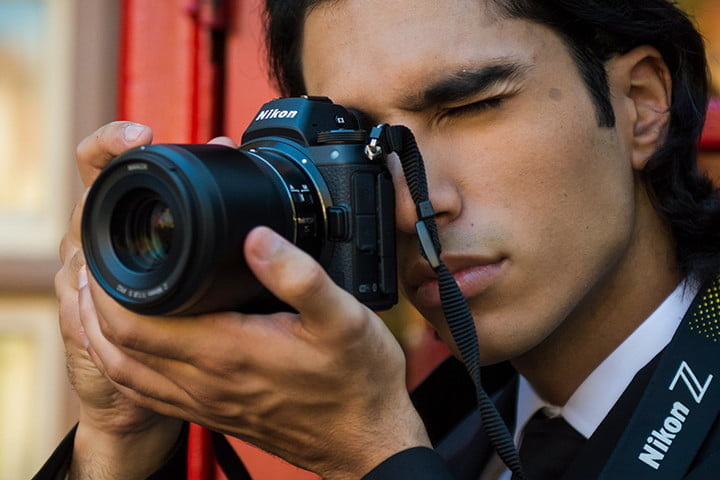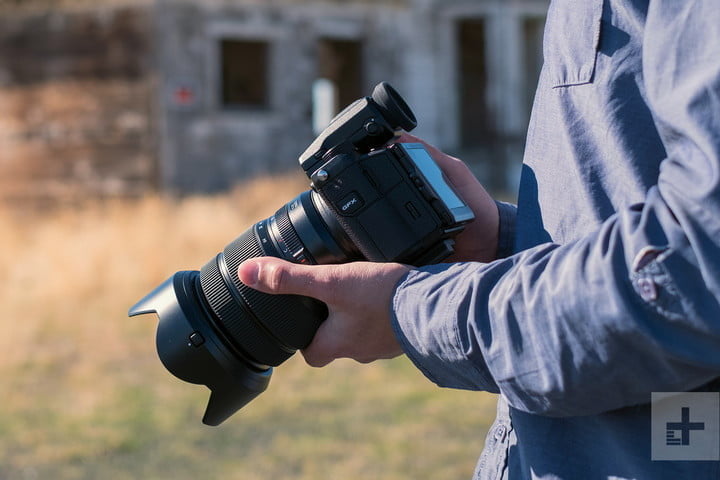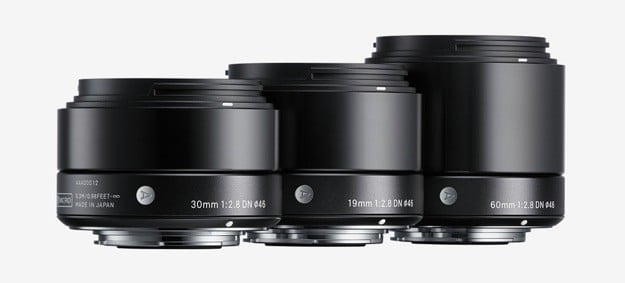Do you know what a mirrorless camera is and what the difference from DSLR cameras? If you are new to the world of cameras with interchangeable lenses, you may find yourself with this question. But with each brand promoting the benefits of its own system, it can often be confusing to try to find out which one is best for you. To help you better understand what a mirrorless camera is, we have broken down all the details, from how they work, to the different styles and which mirrorless cameras are distinguished from those that do.

DEFINING A CMARA WITHOUT MIRROR
As the name implies, a mirrorless camera is one that does not require a mirror for reflection, a key component of DSLR cameras. The mirror of a digital SLR reflects light to the optical viewfinder; In a mirrorless camera, there is no optical viewfinder, however, the image sensor is exposed to light at all times. This allows a digital preview of the image on the rear LCD screen or in an electronic viewfinder (EVF). Mirrorless cameras are called mirrorless, instead of digital SLRs that are called with a mirror, simply because they arrived later.

Now, the term "without a mirror" is a bit confusing. It was not really used until the arrival of mirrorless digital cameras with interchangeable lenses, but many camera models lack a mirror for reflection. Technically, the aim and shoot are mirrorless cameras, as is a Leica telimeter, and even older models. However, the term "mirrorless" is generally used to describe digital interchangeable lens (ILC) cameras that have electronic viewfinders or simply have no viewfinder, and that is how we will use it here.
If we already had DSLR cameras at different prices to remove the mirror and create a new camera category? The main reason is simply the size. Without the large mirror box that occupies space within the body of the camera, mirrorless ones can be much smaller than their DSLR counterparts. Originally popular with beginners and occasional photographers, this design has also grown in the professional sector as well. We will analyze the additional advantages below.
MANY LENSES
Like DSLR cameras, mirrorless cameras use a bayonet mount to place different lenses and each manufacturer has its own proprietary mount so you cannot use any lens on models from different manufacturers. However, you can buy compatible third-party lenses. The only exception here are the Micro Four Thirds, a scheme shared by Panasonic, Olympus and some specialized manufacturers such as DJI and the manufacturer of film cameras Blackmagic Design. Any Micro Four Thirds lens can be used in cameras with the same support, regardless of brand, with almost total compatibility.
One of the interesting things about mirrorless interchangeable lens cameras is that the distance between the lens mount and the sensor is much smaller than in a digital SLR camera. This allows you to add a wide variety of lenses from DSLR manufacturers using various adapters. Companies like Fotodiox and Metabones sell lens adapters for mirrorless cameras that will allow you to use everything offered by the latest Canon lenses to the oldest medium format lenses you can find. You sacrifice some performance but it can be a great benefit for photographers with existing lens cachs.
SENSORS, AUTOFOCUS, VIDEO AND DEMS
Despite having a much smaller format compared to DSLR cameras, mirrorless cameras can enjoy sensors of the same size inside. Just as Canon and Nikon offer full-frame sensors in their DSLR cameras, Sony manufactures cameras without a full-frame mirror and clipping sensor. Companies like Fujifilm have gone one step further, since they also include medium-sized sensors, which are even larger than full-frame ones.

However, keep in mind that just because the camera is smaller does not mean that your mirrorless lenses are. A 300mm lens in a full-frame DSLR camera will be the same size as a camera without a full-frame mirror. There is no way around the physics of that. Smaller sensor formats, however, can be arranged with smaller lenses. The Micro Four Thirds, for example, have a 2x cropping factor compared to the full frame, so a 150mm lens will produce a field of view equivalent to a full 300mm frame, but not with such volume. Larger sensors produce better image quality, so, as always, there is a sacrifice.
The autofocus capabilities of mirrorless cameras vary greatly depending on the manufacturer and the lenses used with the camera. For this reason, it is difficult to say if mirrorless cameras have an advantage over DSLR cameras in this section. In the first few days, they certainly did not, since they rely on much slower contrast detection AF systems, but have improved considerably since then. Despite the good that is the AF of modern mirrorless, we have still found that digital SLRs tend to offer more consistent performance, especially in low light conditions or when tracking moving subjects.

While mirrorless cameras may outperform DSLRs in future AF performance, the only area in which they are likely to always fall short is the duration of the battery. Due to the constant use of the sensor and a live display with LCD or EVF, mirrorless cameras consume their batteries much faster than DSLRs. Efficiency improvements may help in the future, but for now, the battery life of many DSLR cameras throughout the day remains a great advantage for certain photographers, especially those covering sports or other live events.
However, when it comes to video, mirrorless cameras have a pretty clear victory. In video mode, even a digital SLR camera must be configured for live viewing using the rear LCD screen instead of the optical viewfinder. This eliminates the advantage of battery life and the viewfinder becomes useless. An electronic viewfinder in a mirrorless camera, however, can still be used in video mode. In addition, the companies behind the mirrorless cameras, particularly Sony and Panasonic, tend to be much more proactive when it comes to incorporating high-quality video features for their cameras. Canon and Nikon have done little to compete in this field.
Editor Recommendations
